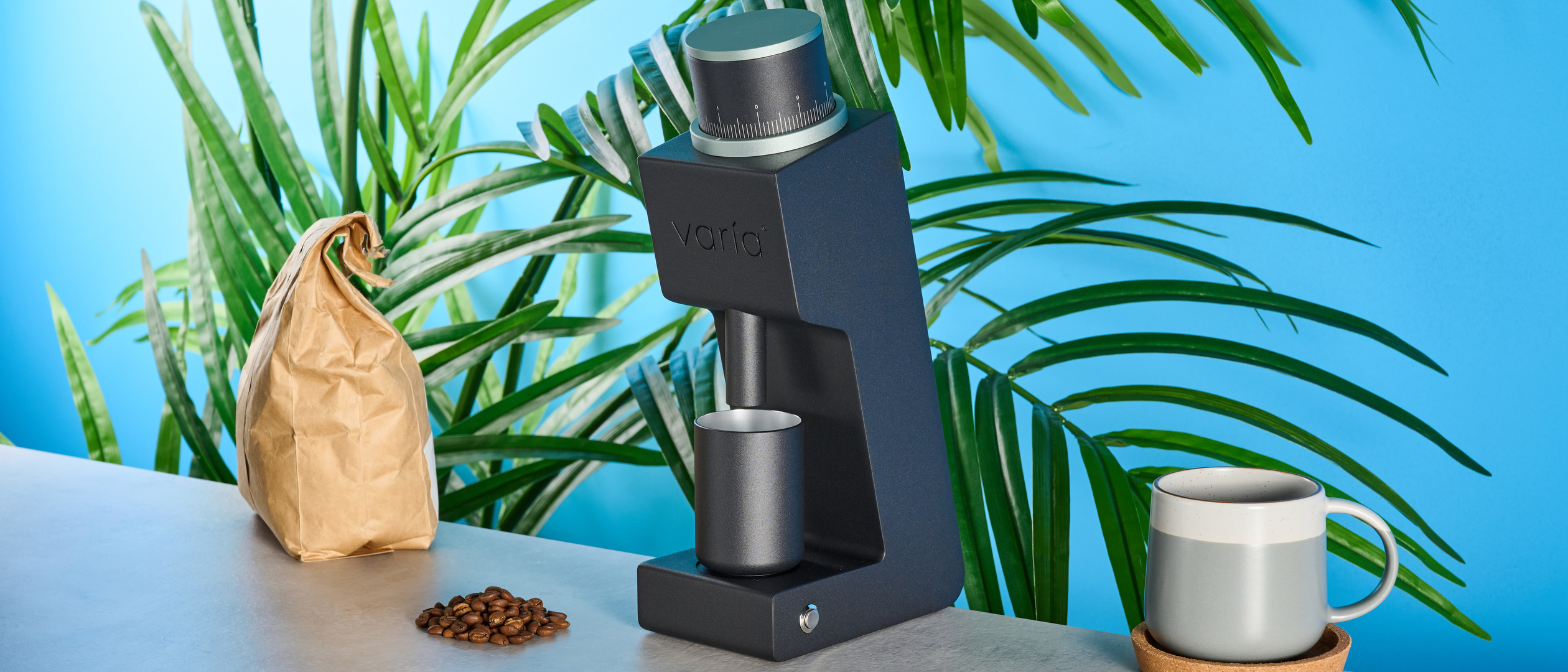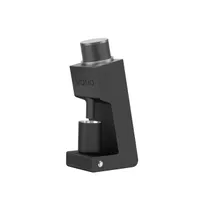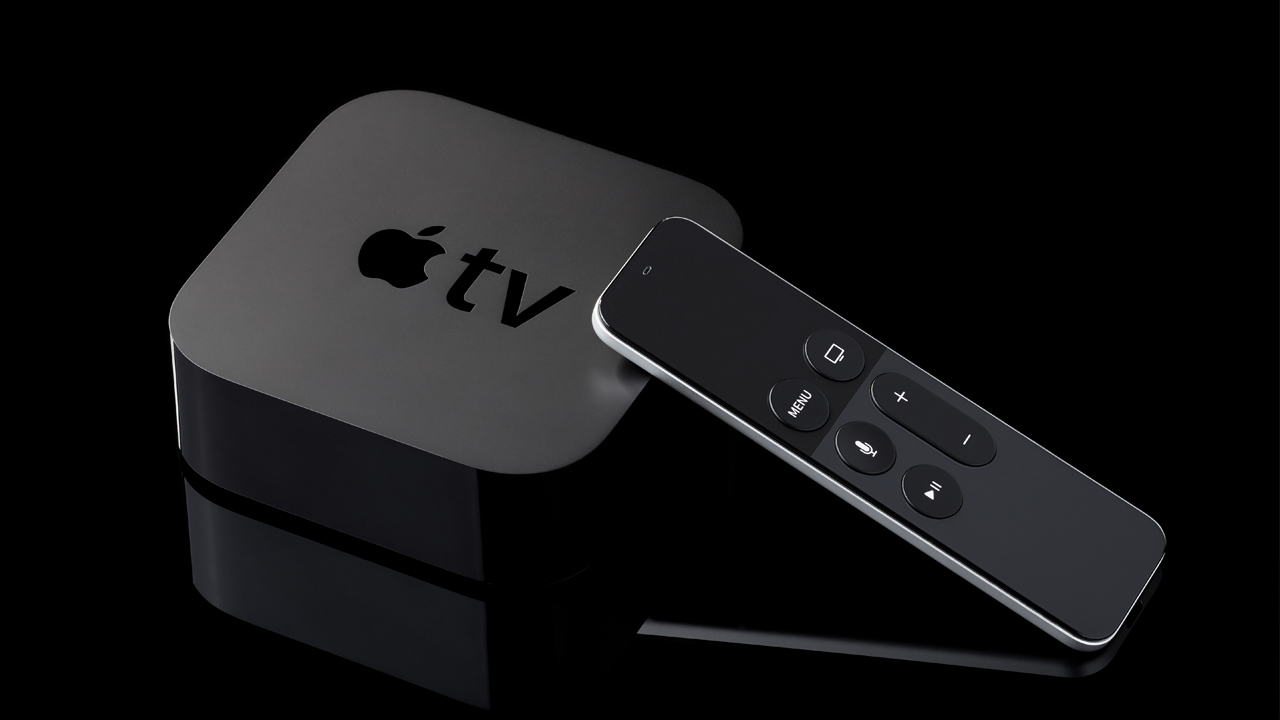Tom's Guide Verdict
The Varia VS3 is the ideal grinder for newcomers to espresso. It’s affordable and very easy to dial in, with low retention and consistent results as espresso-fine grind levels. It’s also beautiful to behold and an exquisite piece of craftsmanship — both belying its entry-level price tag. It has its flaws, including lower uniformity at coarse grinds and a DC power supply that necessitates an annoying charging brick, but neither should be dealbreakers for espresso lovers.
Pros
- +
Affordable price tag
- +
Super easy to use
- +
Low retention
- +
Quiet operation
- +
Outrageously stylish
Cons
- -
DC power
- -
Not ideal for coarse-grind brew methods
Why you can trust Tom's Guide
I won’t beat around the bush: the Varia VS3 is one of the best coffee grinders for espresso lovers, and in particular for beginners.
This sleek little grinder, straight out of one of those pretentious “espresso workflow” YouTube shorts, is surprisingly affordable given its premium styling, and is incredibly easy to dial in — both making it perfect for newcomers to espresso.
Beginner-friendly doesn’t mean the VS3 lacks competence though. Uniformity at espresso consistency and low retention make this a solid performer for the money — I’ve been making espresso for over a decade now and the VS3 has proved capable enough for my needs.
The Varia VS3 is an 'entry-level' grinder, but don't let that put you off if you're looking for a competent electric grinder for espresso. This grinder performs incredibly well for espresso and runs very quiet thanks to a DC motor.
It isn’t perfect, I’ll admit, running slowly thanks to DC power and requiring a chunky power brick. In real world home usage though, those issues won’t be a huge problem.
Find out whether this plucky little grinder is right for you in my full Varia VS3 review.
Varia VS3 review: Price & availability
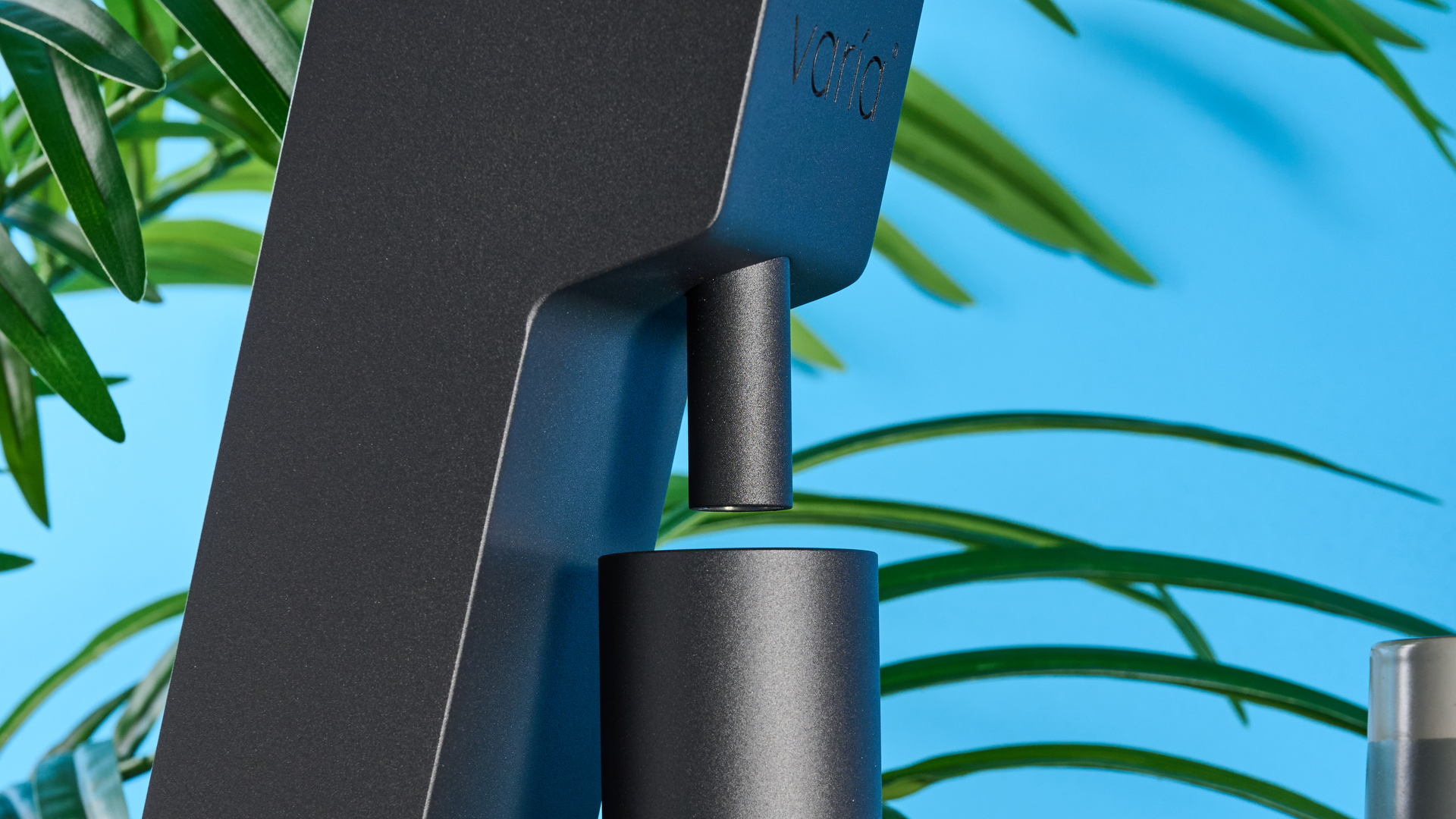
The Varia VS3 is available in black white or silver, and sits at an extremely attractive price of just $299 / £229 — the U.K. price is especially low for such a competent espresso-capable grinder. It’s also regularly on sale, and at the time of writing I’ve seen it drop as low as $269 / £206 from Varia. That might still seem like a lot to the uninitiated, but trust me: it ain’t.
Typically held as one of the safest bets for beginners and enthusiasts alike, the stalwart Eureka Mignon Specialita, will set you back $649, and that’s a mid-tier grinder. Pro and commercial grinders like the Eureka Atom W 75 will happily push into the thousands. Even hand grinders get pricey, like the $323 Comandante C70 Mk.4 — the finest hand grinder you can buy, although far from the prettiest.
Get instant access to breaking news, the hottest reviews, great deals and helpful tips.
Splashing around with the VS3 in the budget end of the pool is the $199 Baratza Encore ESP — a sound grinder for beginners, but lacking the finesse of the VS3, and not worth the saving if you can spare a little more budget.
Varia VS3 review: Design
The Varia VS3’s design and construction each defy the grinder’s modest price tag. The solid matte colorways, premium metal casing and elegant 76.5° retention-busting sloped geometry all ooze sleek scandi minimalism — despite the Varia team hailing from New Zealand. It’s an exceptionally pretty grinder, with an ultra-modern feel that I much prefer to the quintessential Italian styling of my Eureka Mignon.
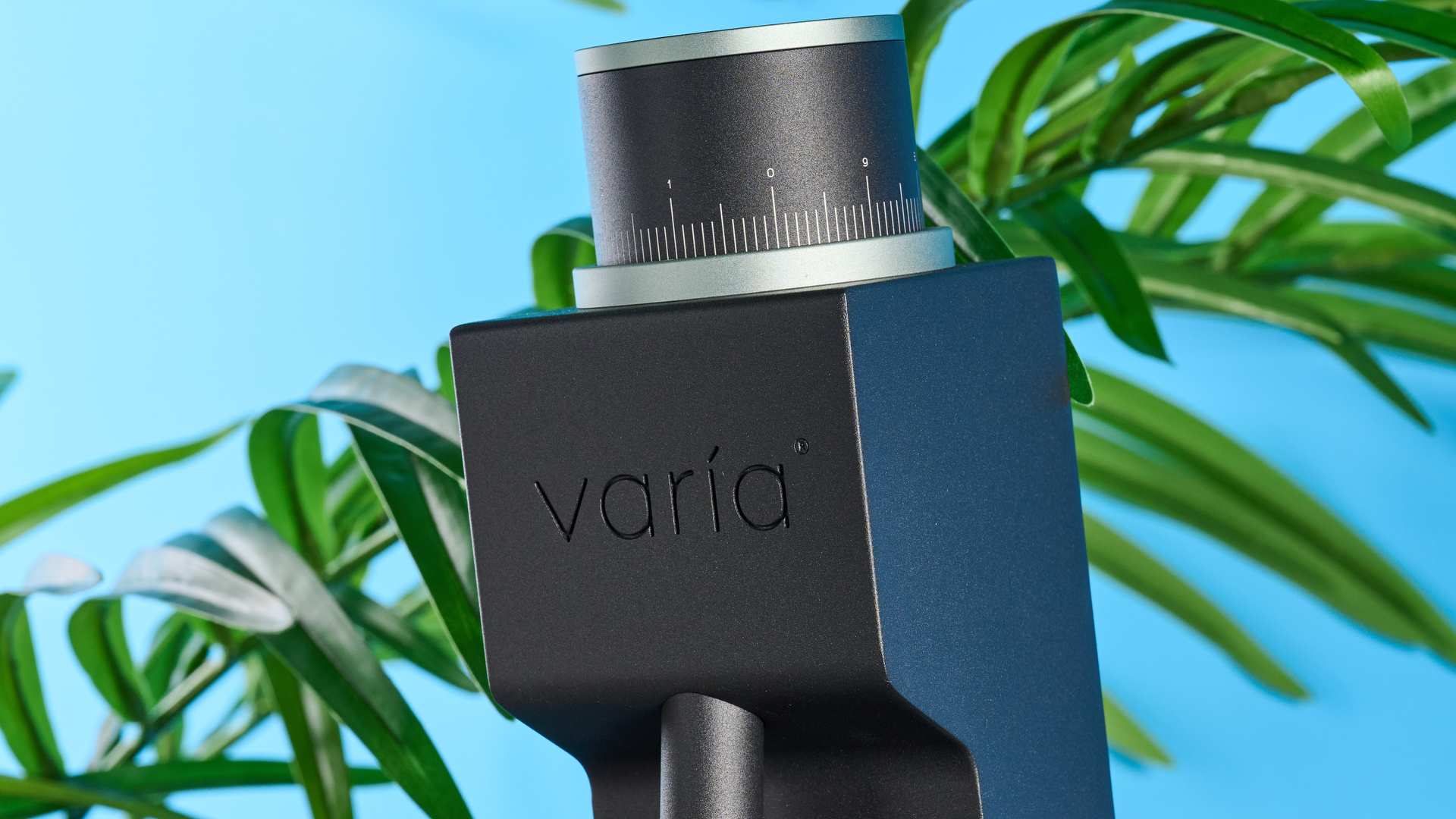
The VS3 is no lightweight, seemingly employing half a mine’s worth of aluminum in its construction, although this has the benefit of keeping it nicely planted and sturdy despite its relatively tall, skinny profile. And it’s that same narrow physique which makes it easy to stash into small worktop spaces.
As alluded to above, build quality is just fantastic. There’s all that aluminum, of course, but it’s the quality of finish that really impresses me: the tactile silver side button; the powder-coated anti-scratch matte paintjob; the metallic hopper collar that clunks into place with a firm, magnetic thud. The attention to detail is simply gorgeous, and I wouldn’t be shocked if you told me the VS3 was loss-leading for Varia, given the unit’s low price.
Compare the VS3 to the slightly cheaper Baratza Encore ESP and, well, there is no comparison. The Barazta is made primarily of plastic, looking and feeling cheap, not to mention dated. It’s an astounding difference in quality given the (at most) $100 delta between the two products.
Varia VS3 review: Grind adjustment
I love the Varia VS3’s stepless grind adjustment ring. It rotates fully twice and effectively gives 17 main grind levels, with 10 subsequent increments of 0.1mm between each for a total of 170 grind levels (although as a stepless grinder there are no truly fixed increments save wide open/shut).
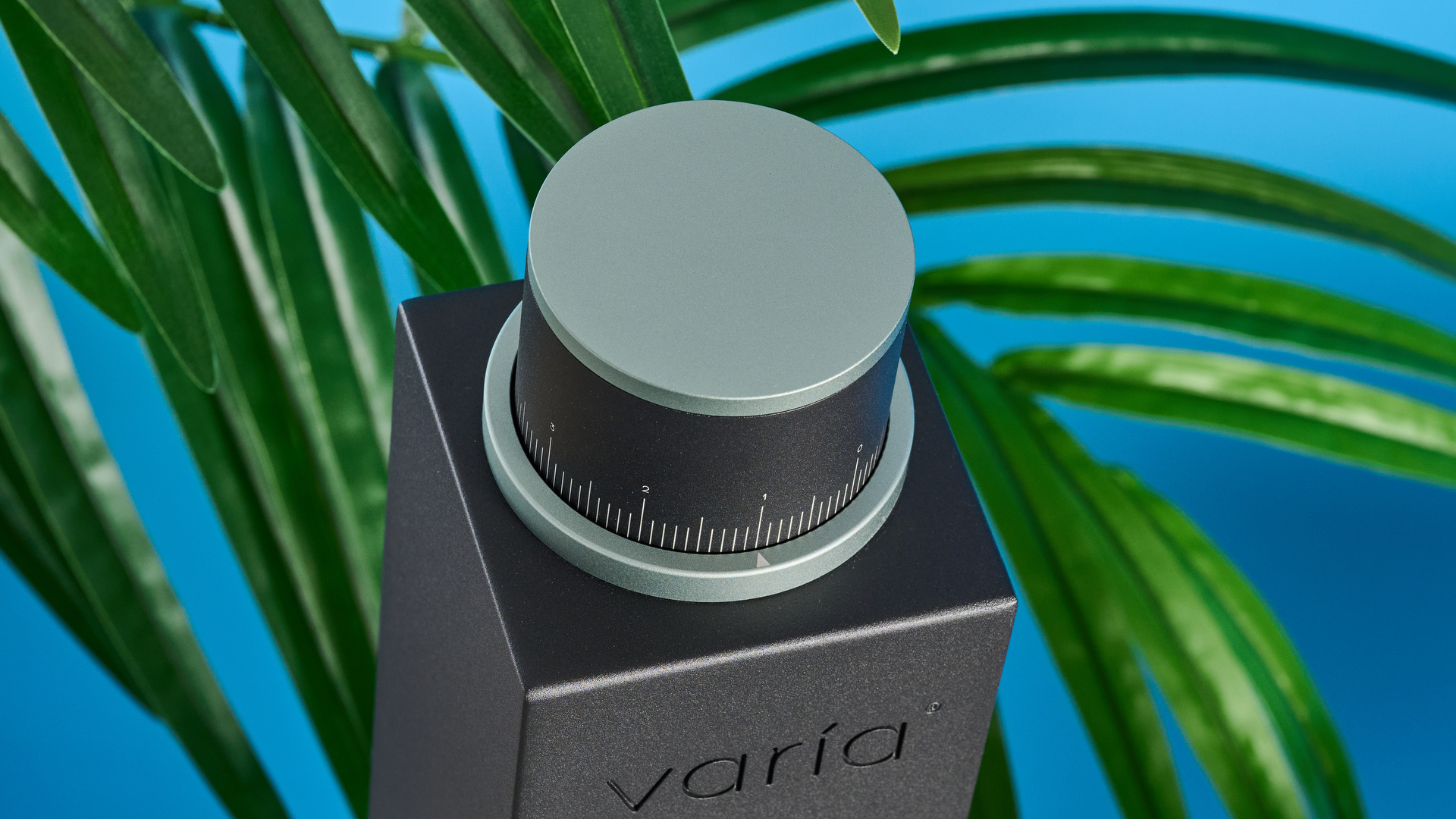
Long story short, you’ve got plenty of fine adjustment to play with, and can grind from über coarse cold brew, all the way down to espresso fine. As with the Baratza Encore ESP, the VS3 can’t grind fine enough for Turkish, it should be noted.
Two full rotations of the dial makes for a relatively short overall throw (distance between fully open and touching). This is the perfect balance of control, without so much adjustment that it’s easy to get lost while flicking between grind sizes. My Eureka Mignon’s dial, for example, has 5 full turns, and it’s easy to lose track of where you’re set.
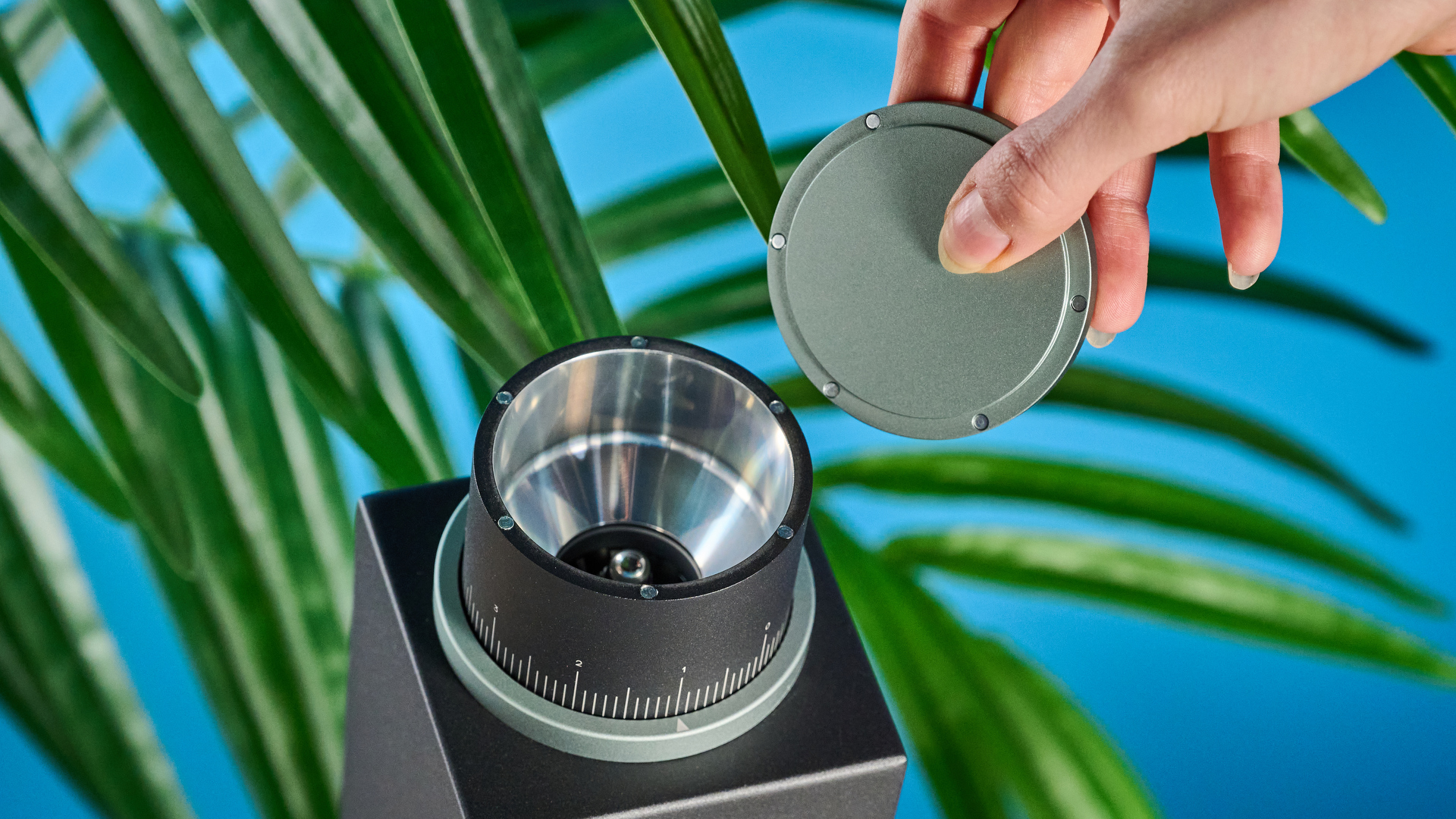
Adding to this is the VS3’s low retention, which I’ll cover in the Performance section below. With low retention, you can switch between grind sizes with very few, or no grounds from your previous setting making it through.
All this means the VS3 is super easy to dial in, and to flit between various brew types — a major boon for newcomers to coffee.
Varia VS3 review: Performance
The Varia VS3 is a conical burr grinder, using 48mm stainless steel burrs. The general consensus is that conical burrs tend to blend flavor profiles together for a fuller-bodied espresso shot, while flat burrs separate profiles more, for greater shot clarity.
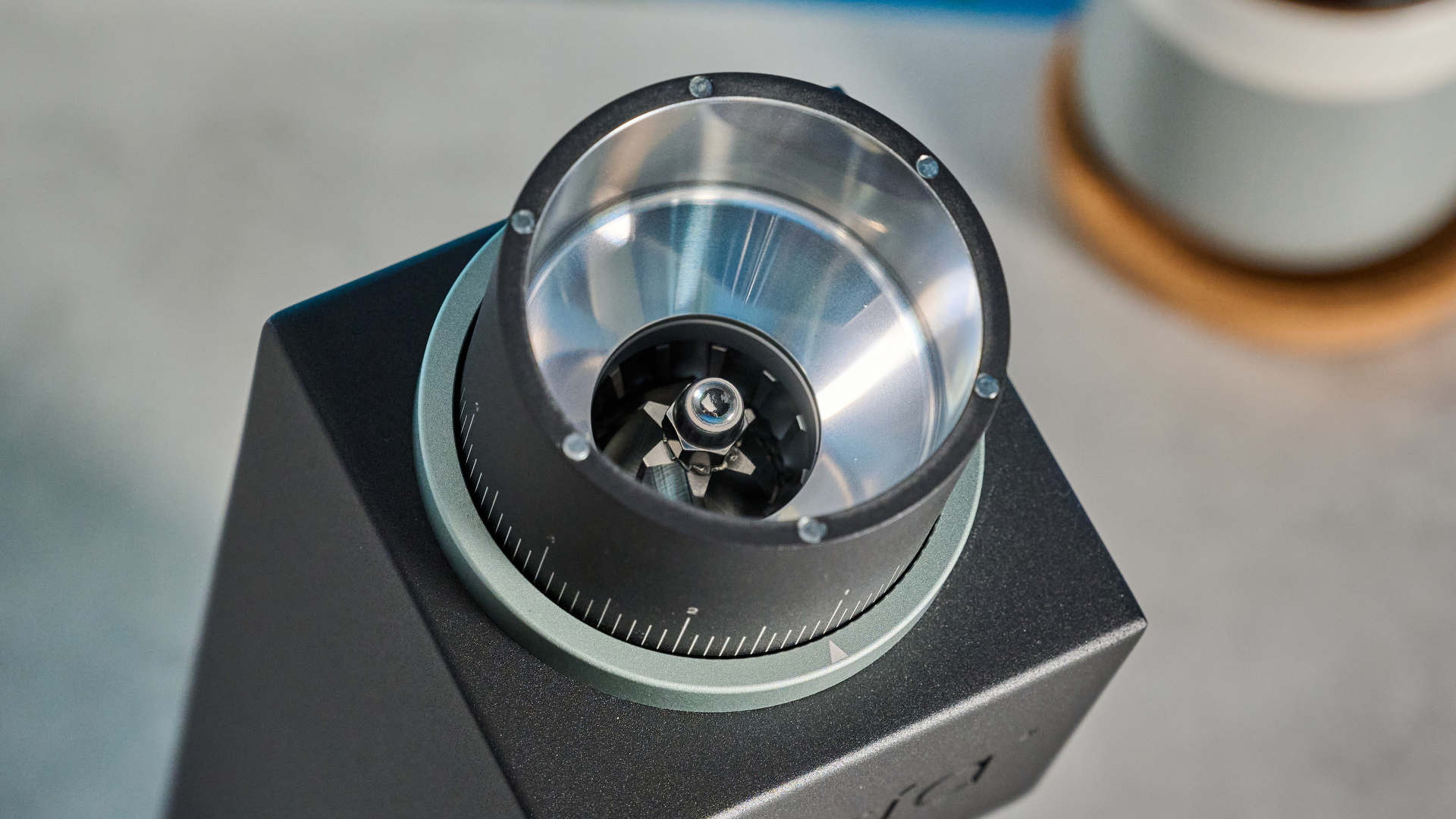
The online debate is perpetual as to the extent of difference this actually makes. I think the traditionally drawn battle lines are a little reductive — if the legendary conical burr Comandante C40 proves anything, it’s that burr materials and blade geometry can matter just as much as profile.
Regardless, there’s undoubtedly some truth in it, which the VS3 lives up to. I tested with lighter and darker roasts, using a variety of specialty beans from Hard Lines coffee. These included washed, natural and wet-hull processed beans, from a range of single origins, including Indonesia, Tanzania, Peru, Rwanda, Kenya and more. I tested using the Diletta Mio and 9Barista Espresso Machine Mk.2, two of the best espresso machines you can buy.
In general, I wasn’t able to isolate individual flavor profiles as much as I usually can with my Eureka Mignon Specialita, especially the fruitier and more acidic notes. But the espresso I made after grinding with the VS3 was delicious, and indeed full-bodied.
Uniformity
The first standardized test we subject coffee grinders to in the Tom’s Guide reviews testing lab is a uniformity test using our set of Kruve sifters. The VS3’s results are below.
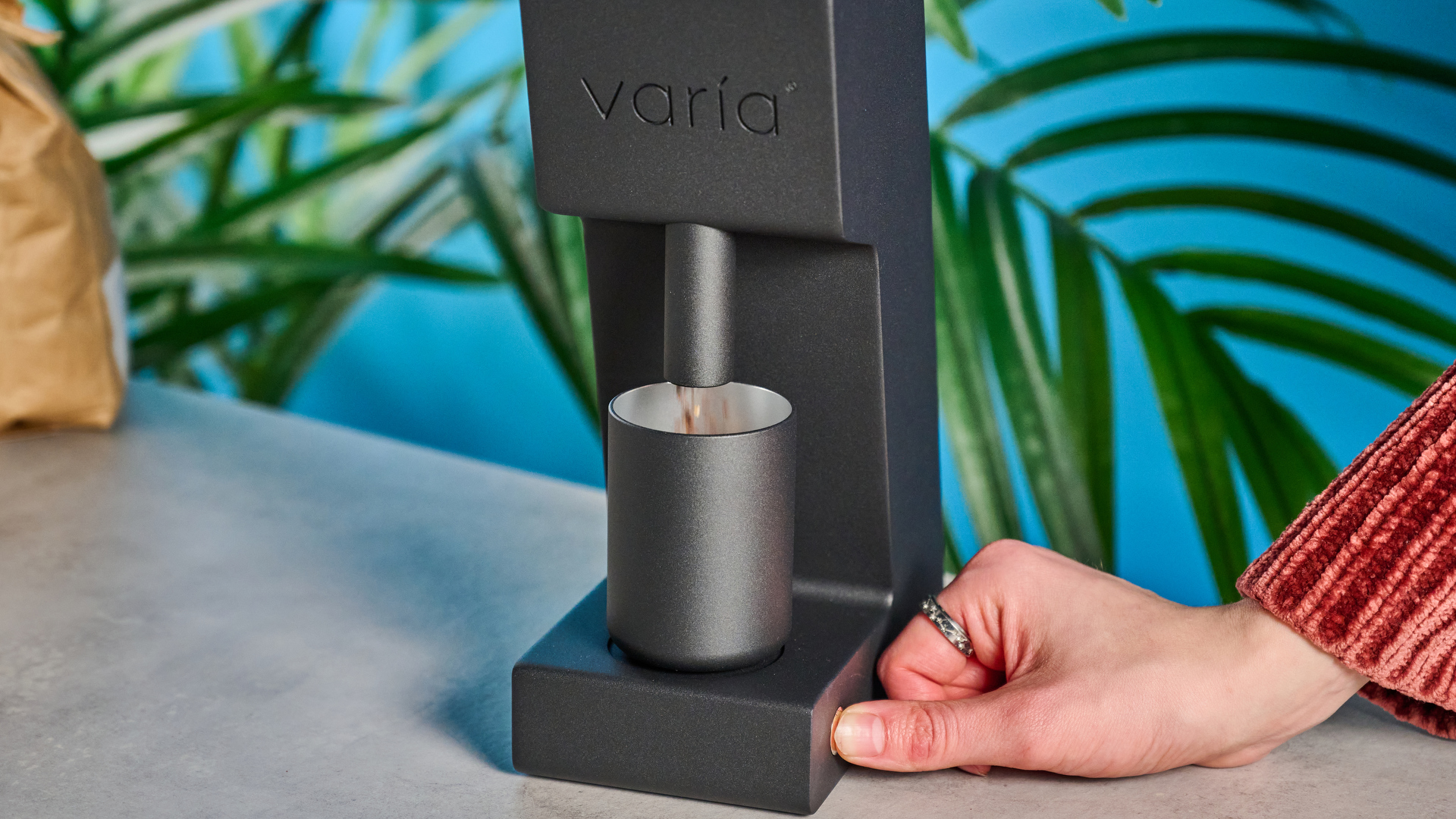
We want to see large swings between 0-5% and 90-95% as we shift filters. For example, at Fine, we have a swing from 5% to 95% between the 300μm and 500μm filters. This means that 95% of the grounds were more or less the same size, suggesting high levels of uniformity.
Grind size | 300μm | 500μm | 800μm | 1100μm | 1400μm |
|---|---|---|---|---|---|
Super fine | 20% | 90% | 95% | 100% | 100% |
Fine | 5% | 95% | 100% | 100% | 100% |
Medium | 0% | 5% | 80% | 95% | 100% |
Medium coarse | 0% | 5% | 50% | 80% | 95% |
Coarse | 0% | 5% | 15% | 50% | 90% |
At the super fine grind levels, there was a modicum of variance, with the jump from 20-90%, although this isn’t awful, and indeed there is discourse in the coffee community as to whether some variance in grind size actually benefits espresso flavor balance.
At fine levels, the VS3 was very uniform, and this bore out in my espresso testing. I tested with a variety of beans, including lighter and darker roasts, and was able to get very consistent espresso results from my various batches of beans, intra-batch.
As you can see from the results table, uniformity drops off at medium coarse and coarse levels. These results again bore out in testing, where the lower uniformity made it difficult to eradicate certain unwanted flavor profiles from my Chemex and Clever Dripper brews, regardless of how much time I spent dialing- and redialing-in.
If you’re mainly drinking pour overs, I would suggest a highly uniform grinder like the Commandante C40 Mk.4.
Retention
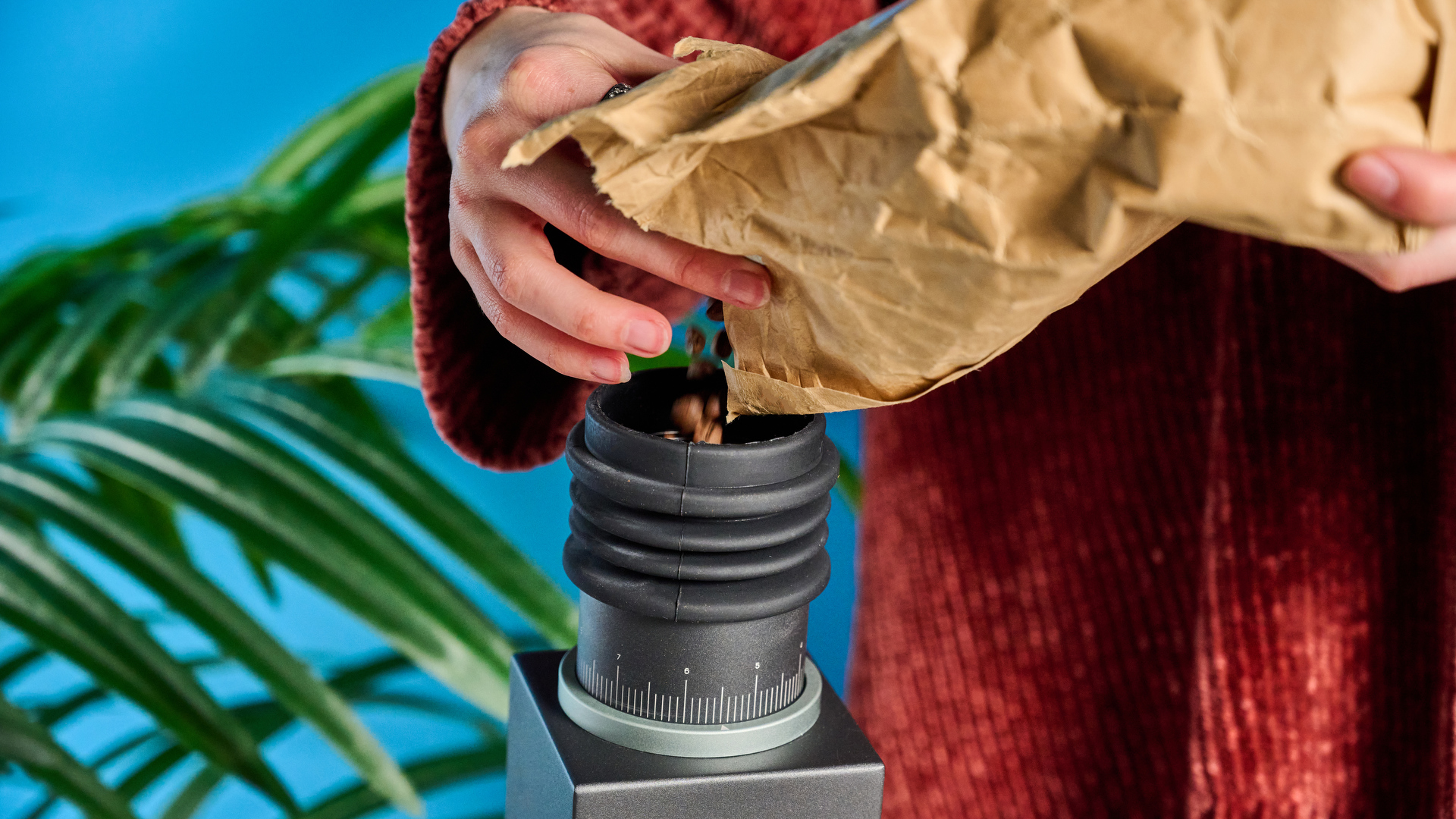
The VS3 is a low retention grinder thanks to its 76.5° burr tilt and included bellows. This is very important, as the VS3 is a single-dose grinder that needs to be capable of grinding different beans at varying levels, back-to-back — you don’t want the last shot’s grounds making it into the next shot if you’re changing beans or grind size, as this will affect the end result.
As you can see in the table below, the VS3 hovered around 0.1 - 0.2g of retention from a 20g dose. It averaged 0.15g, or 0.75% — in other words, very low retention.
Varia VS3 — Retention test | Coffee in | Grounds out |
|---|---|---|
Retention test 1 | 20.0g | 19.8g |
Retention test 2 | 20.0g | 19.8g |
Retention test 3 | 20.0g | 19.9g |
Retention test 4 | 20.0g | 19.9g |
This is improved by using the included bellows attachment, which (as you might’ve guessed) blows air through the burrs, shooting out any stuck grounds and helping to keep the burrs clean.
Static
When new, the VS3 is a static-heavy grinder. Static causes grounds to stick all over the chute and body, and is fairly normal with new grinders — over time, burrs become ‘seasoned’ by the natural oils from coffee beans, reducing the amount of static charge passed into the grounds.
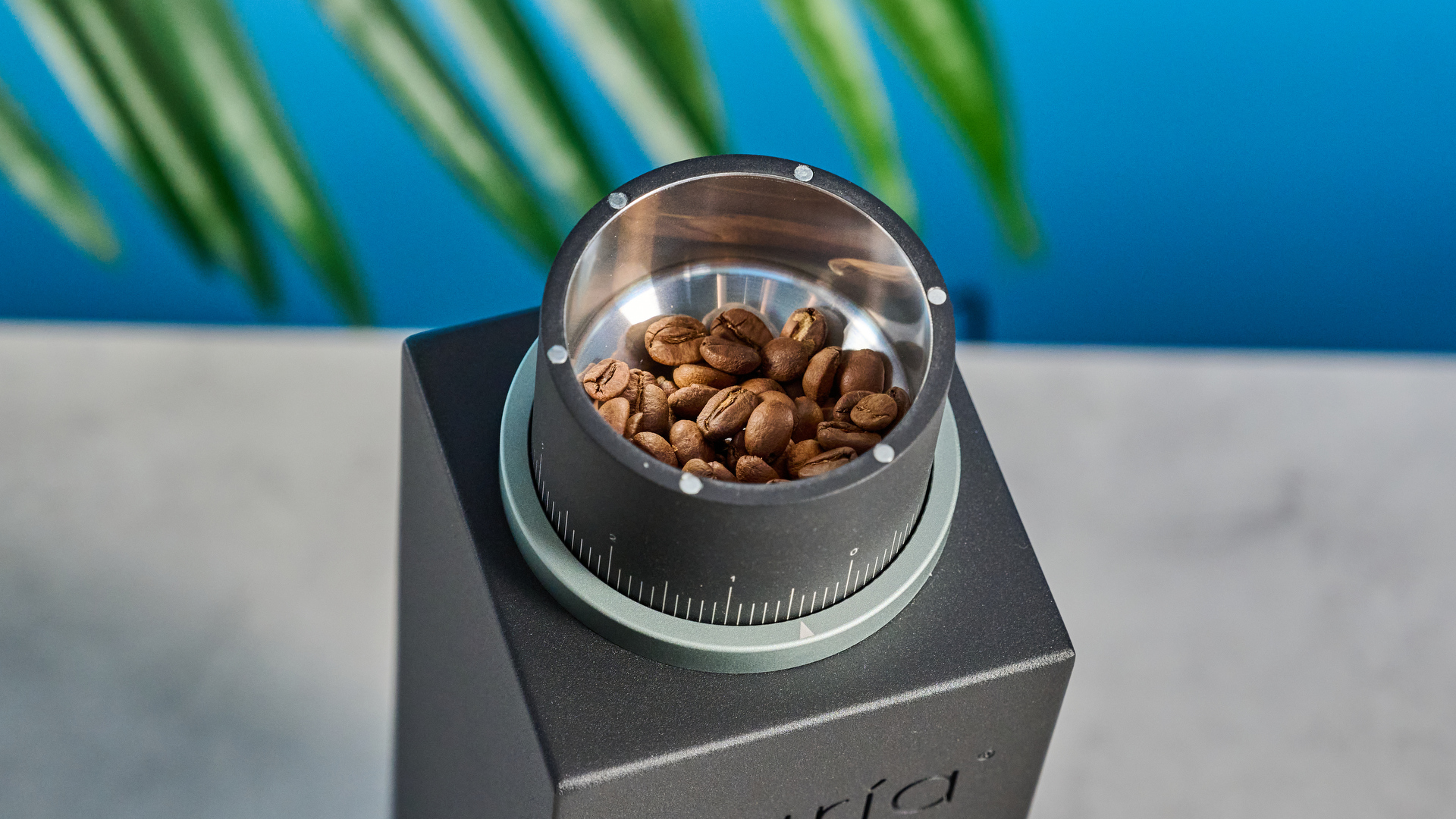
Varia states that static charge will decrease after grinding around 2KG of beans. Indeed, I’ve ground around 2.5KG now and have seen a noticeable improvement.
Varia also states that you can safely mist your beans with water to decrease static and retention, and even includes a spray bottle with the VS3 to do so. You’ll see this referred to (rather cringeworthily, if you ask me) as “RDT” or “Ross Droplet Technique”. Yeah, “Droplet Technique” — spraying your beans with water. The snobbery of the coffee world never ceases to amaze me.
Note that the retention results above were achieved using totally dry beans, and when the VS3 was straight out of the box. So you can expect even better results as time goes on, without having to punctiliously spray your beans with water.
Power, speed and noise
The Varia VS3’s only Achilles heel is its power supply. The grinder runs on DC power rather than AC, which causes a couple of mildly frustrating (although not ruinous) side effects.
The first of those effects is that the power lead needs an AC to DC converter — a large brick — which is cumbersome and ugly on a worktop. I’ve hidden it behind an air fryer, which means I now can’t seat the fryer flush against the wall when not in use.
Secondly, DC power means slower speeds versus other grinders. The VS3 burrs spin at 170RPM, versus the 550RPM of the Baratza Encore ESP. A 20g dose at espresso-fine will take you around 30 seconds. Honestly, speed isn’t that big a deal given this is a home-use single dose grinder.
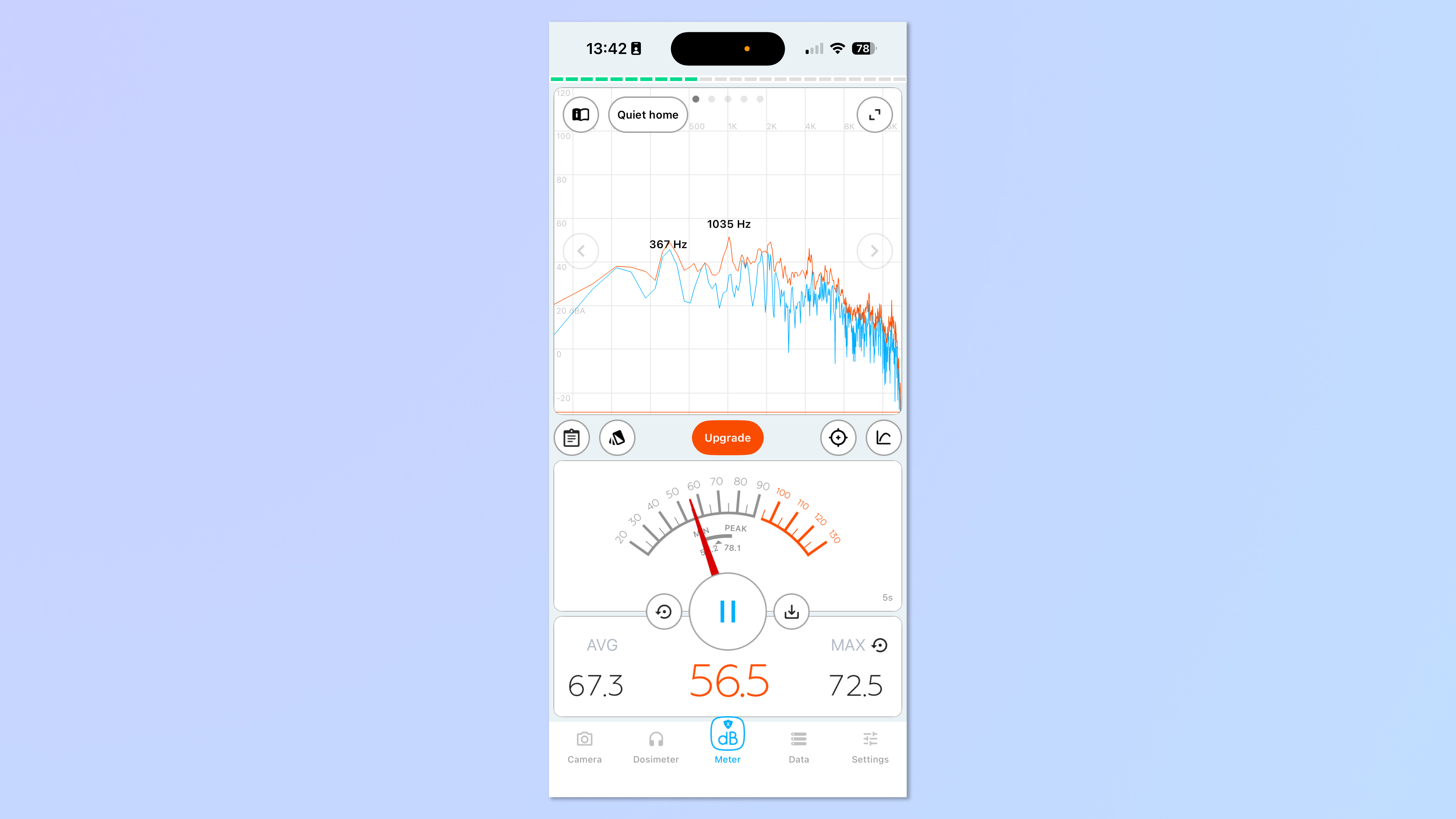
There is a third side effect, though — this time a positive. The VS3’s slow speed makes for a (relatively) quiet grinder. In my testing, it averaged 67dB, so quieter than my Eureka Mignon Specialita (75dB) and much more morning friendly than the Baratza Encore ESP (82dB).
Varia VS3 review: Extra features
The Varia VS3 comes with some super handy accessories, which is great to see on a grinder as affordable as this. It would’ve been easy for Varia to leave these out and charge extra for them as bolt-on accessories.
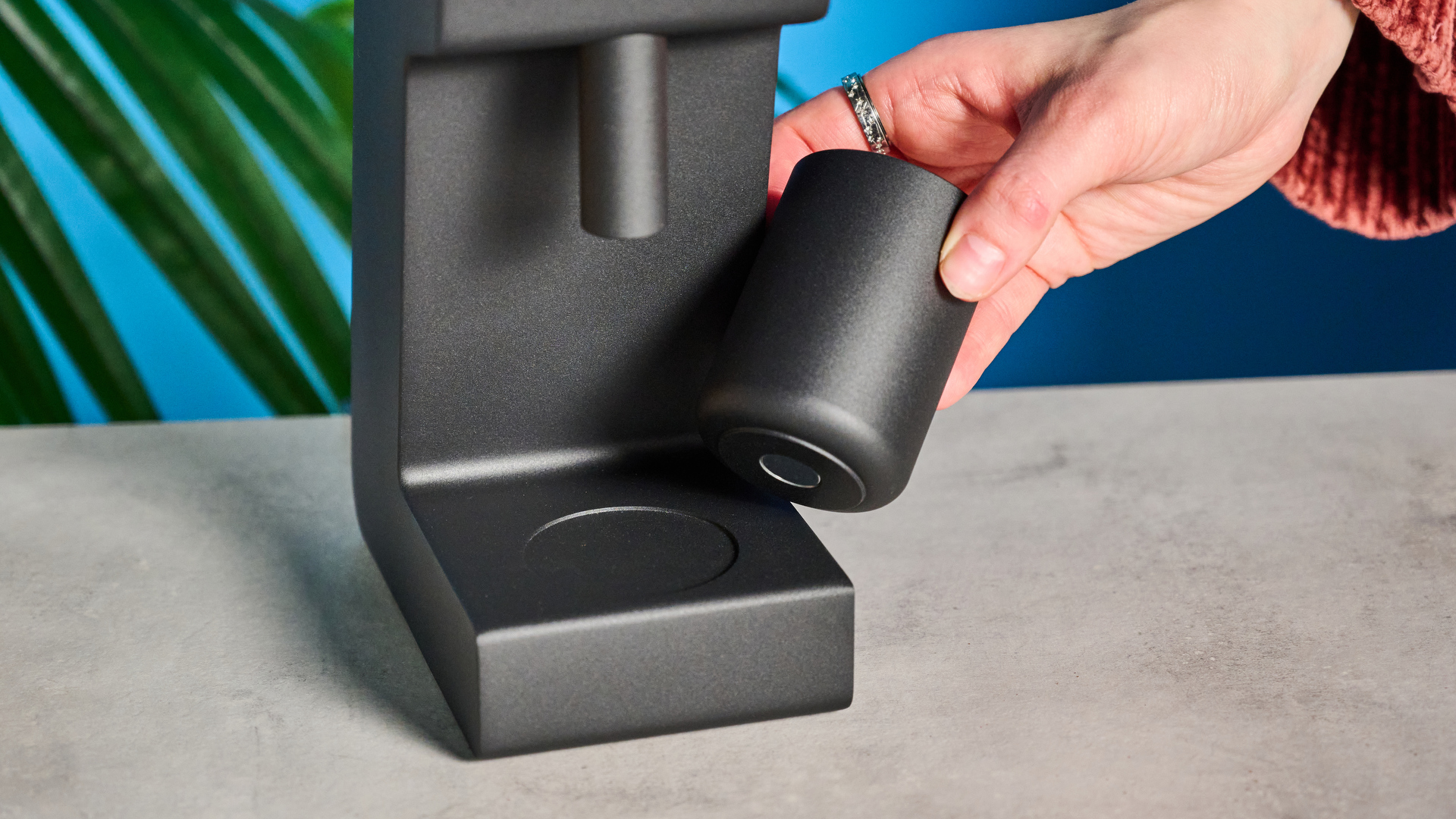
As I’ve already mentioned, each VS3 comes with a bellows for purging and a spray bottle to spritz your beans with wate— sorry, I mean: to lovingly perfect your ultimate Droplet Technique.
The VS3 also comes with a magnetic dosing cup, which attaches underneath the chute with said magneticness. It’s perfect for weighing out beans to dose in, collecting beans under the chute, and cleanly dosing into a portafilter. It’s narrow too, and fits inside my 53mm IMS basket for the 9Barista Espresso Machine Mk.2 — useful, as I don’t have a dosing funnel for that portafilter.
Varia VS3 review: Storage & maintenance
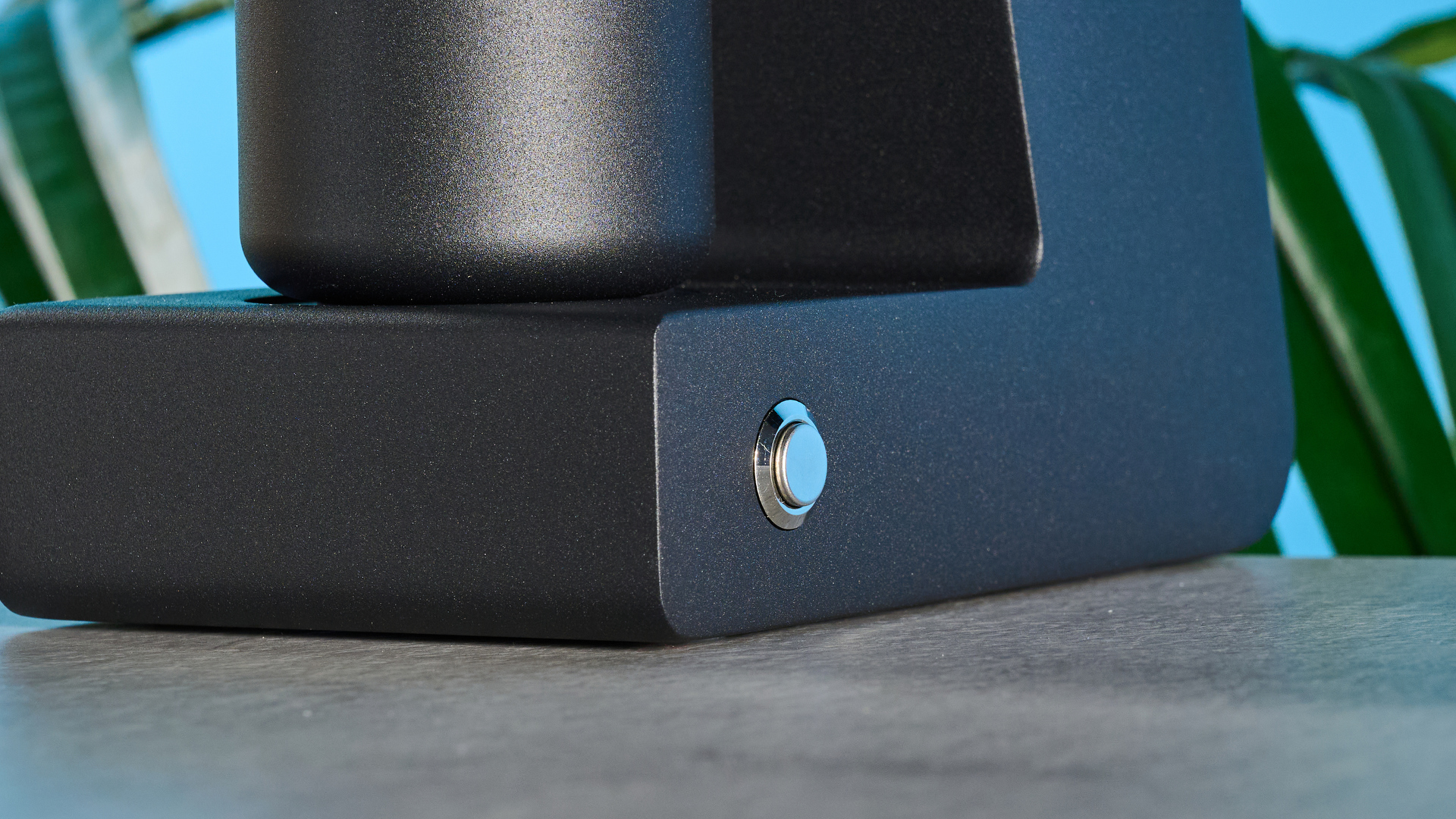
The Varia VS3 is an easy grinder to maintain. The bellows help quite a bit, allowing you to purge the grinder with ease and cutting down the frequency with which you’ll need to strip it down to clean the burrs.
When you do need to clean the burrs, the VS3 comes with a user manual to take you through the process of dis-/reassembly, and includes the tools required to do so.
Storage is fairly easy, as the VS3 is narrow with a relatively small footprint. It should fit easily into even compact coffee stations. The only exception, of course, is that chunky charging brick, which is unsightly and cumbersome.
Varia VS3 review: Verdict
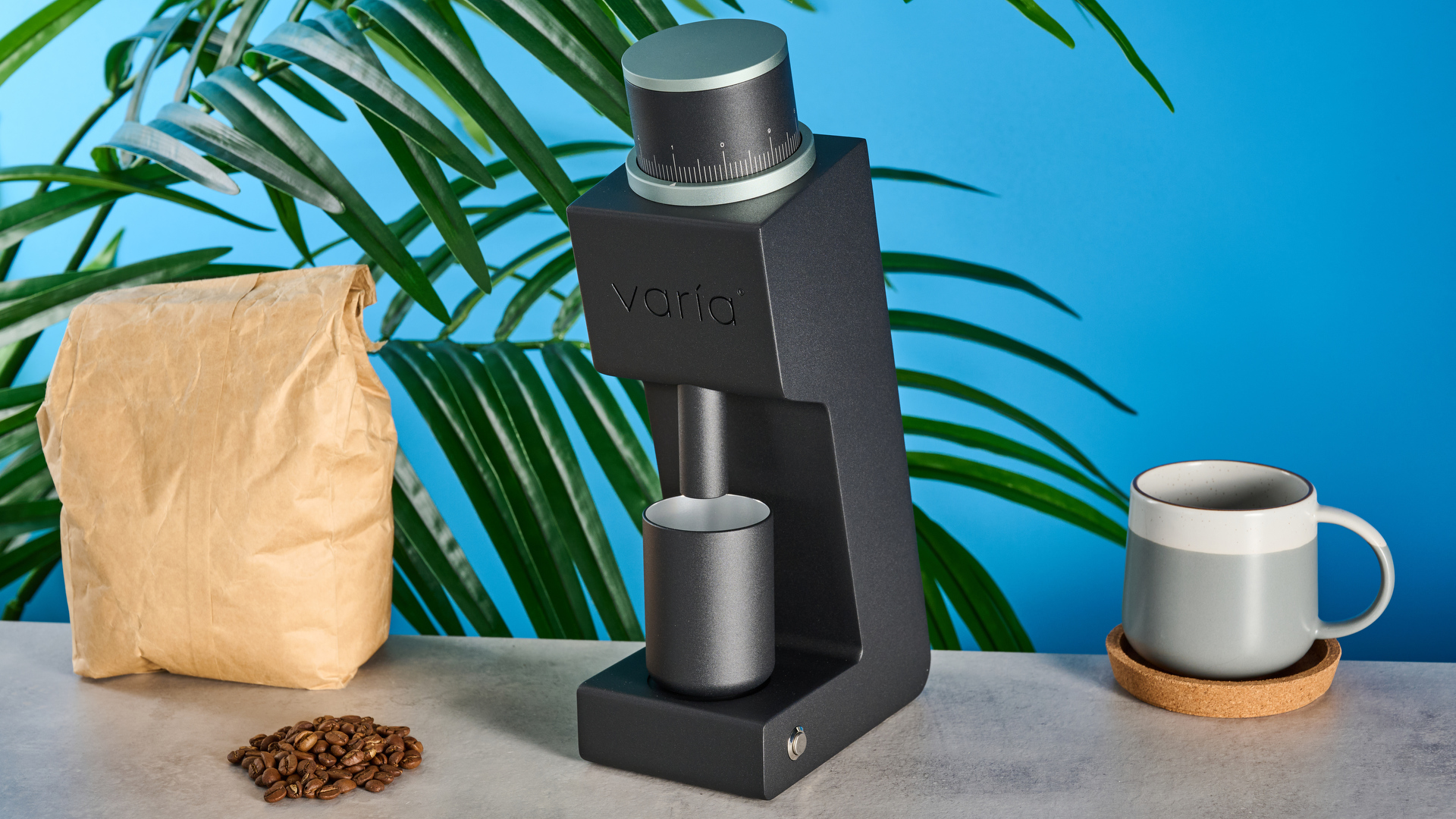
The Varia VS3 is an incredibly strong espresso grinder for the money. The most important factors, naturally, are around core performance: fineness of grind, shot-to-shot consistency, levels of control, and retention. In all those areas, the VS3 proves highly competent, making it a solid grinder for espresso.
Its affordable price tag and ease-of-use make this a standout product for newcomers in particular. The price especially, which is a real win given the performance, exceptional build quality and finish, and the roster of accessories bundled in.
The Varia VS3 is an 'entry-level' grinder, but don't let that put you off if you're looking for a competent electric grinder for espresso. This grinder performs incredibly well for espresso and runs very quiet thanks to a DC motor.
The VS3’s only major flaws are its lack of suitability for coarse grinds brew methods, and the annoying DC power supply that results in slow grind speeds (albeit quiet operation) and a cumbersome power cable. If you’re an espresso drinker, though, none of that should really matter too much, and the VS3 should be sitting comfortably at the top of your shortlist.

Peter is a Senior Editor at Tom's Guide, heading up the site's Reviews team and Cameras section. As a writer, he covers topics including tech, photography, gaming, hardware, motoring and food & drink. Outside of work, he's an avid photographer, specialising in architectural and portrait photography. When he's not snapping away on his beloved Fujifilm camera, he can usually be found telling everyone about his greyhounds, riding his motorcycle, squeezing as many FPS as possible out of PC games, and perfecting his espresso shots.
You must confirm your public display name before commenting
Please logout and then login again, you will then be prompted to enter your display name.
